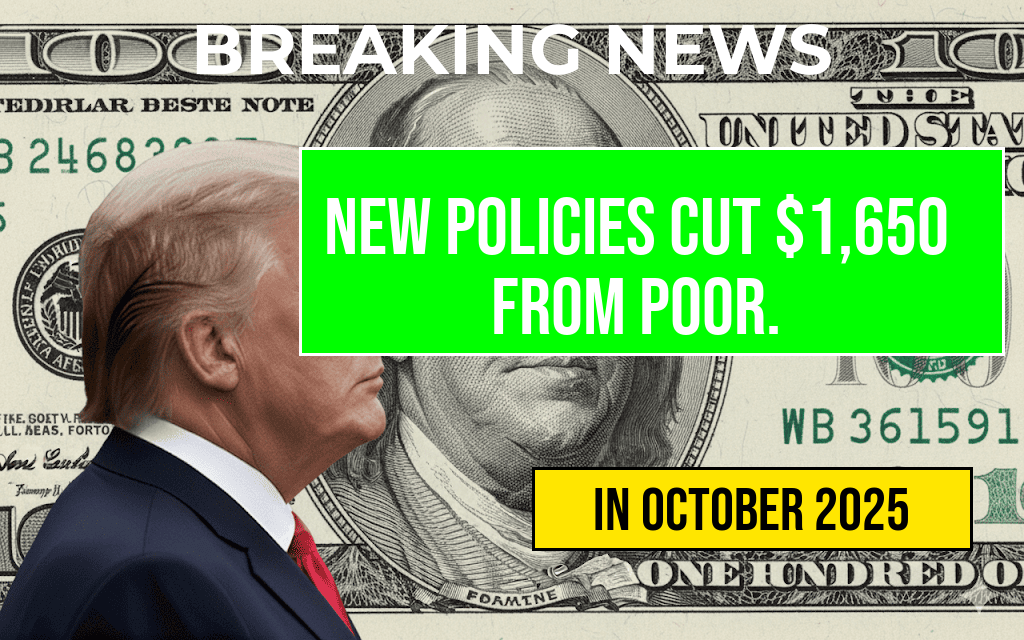Recent policy changes proposed by the federal government are projected to significantly impact the financial stability of the nation’s poorest households, potentially reducing their incomes by an average of $1,650 annually. This alarming development has raised concerns among economists, social advocates, and low-income families who fear that such cuts could exacerbate poverty levels and hinder efforts to achieve economic mobility. The proposed adjustments primarily target social welfare programs, including food assistance and housing subsidies, which are crucial lifelines for millions of Americans struggling to make ends meet. As lawmakers debate the implications of these changes, the ramifications on the most vulnerable populations are becoming increasingly apparent.
Understanding the Proposed Policy Changes
The new policies aim to streamline government spending by reducing funding for various social safety net programs. Key areas affected include:
- Supplemental Nutrition Assistance Program (SNAP): The proposed cuts could reduce benefits, impacting food security for low-income families.
- Housing Assistance: Changes in eligibility criteria may disqualify many households from receiving vital rental support.
- Child Tax Credits: Adjustments to tax credits may leave families with lower disposable income.
Potential Impact on Households
According to a report by the Center on Budget and Policy Priorities, the cuts could push millions of Americans deeper into poverty. Households that rely on these programs for basic needs face dire consequences if the proposed changes take effect. Economists estimate that the reduction in income could lead to:
- Increased food insecurity among families, particularly children.
- A rise in homelessness as families struggle to afford rent.
- Negative impacts on health outcomes due to inadequate nutrition and housing.
Economic Analysis of the Cuts
Experts warn that the cuts could have far-reaching implications for the broader economy. By reducing disposable income for the poorest households, the government may inadvertently stifle consumer spending, which is a crucial driver of economic growth. A study from the International Monetary Fund indicates that income inequality can hinder overall economic performance, suggesting that these policy changes could lead to slower growth rates in the long run.
Public Response and Advocacy
The proposed policies have sparked a wave of criticism from various advocacy groups. Organizations focused on poverty alleviation argue that instead of slashing benefits, the government should be investing in programs that lift families out of poverty. Activists have mobilized to voice their concerns, calling for increased public awareness and urging lawmakers to reconsider the implications of these cuts. Many emphasize the importance of maintaining robust safety nets as essential for fostering long-term economic stability.
Looking Ahead
As lawmakers continue to debate these policy changes, the future of low-income households hangs in the balance. Community leaders and advocates are pushing for alternative solutions that prioritize economic support rather than cuts. The ongoing discussions will likely shape the landscape of social welfare in the U.S. for years to come, making it crucial for both policymakers and the public to engage in meaningful dialogue about the best path forward for America’s most vulnerable citizens.
Conclusion
The proposed policy changes threatening to slash income for the poorest households by $1,650 underscore a critical moment in U.S. social policy. With potential ramifications not just for individuals, but also for the economy as a whole, the outcome of these discussions will significantly impact millions of lives. Moving forward, advocacy for equitable solutions will be vital in ensuring that the needs of low-income families are met and that they have a fair chance to thrive.
Frequently Asked Questions
What are the new policies mentioned in the article?
The new policies refer to recent government changes that aim to reduce funding and support for low-income households, ultimately threatening their financial stability.
How much income will the poorest households lose?
The article indicates that the poorest households could see their income slashed by as much as $1,650 due to these new policies.
Who will be affected by these income cuts?
The income cuts will primarily impact low-income families and individuals who rely on government assistance programs for their daily needs and basic living expenses.
What are the potential consequences of these income reductions?
Potential consequences include increased poverty rates, reduced access to essential services, and a higher risk of homelessness among the affected populations.
Is there any way to prevent these income cuts?
Advocacy groups are urging policymakers to reconsider these changes, and community action can play a significant role in raising awareness and pushing for policy reforms that protect the most vulnerable households.

Leave a Reply